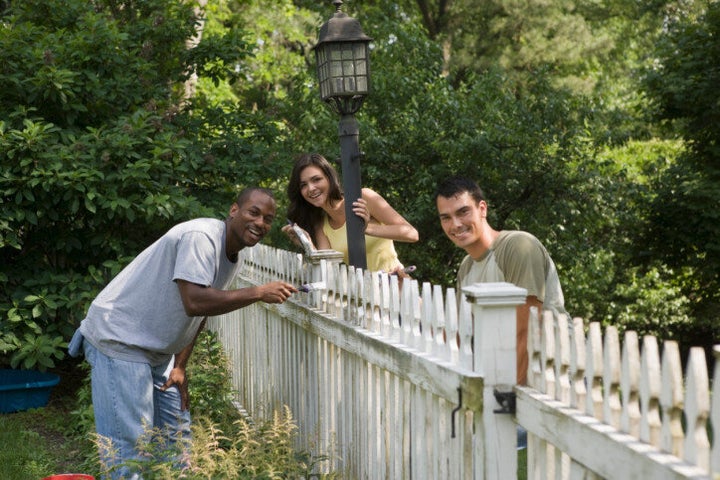
Most of us belong to lots of different kinds of clubs, groups and associations. Each is held together by a common gift, skill, interest or passion. Choirs are associations that magnify the gifts of people who sing well. Sports teams collect people together with certain athletic skills. The American Legion joins together people with a common war experience.
Whatever the group, the "glue" that holds it together is whatever the members have in common -- something important enough to lead them to join and actively participate in a pursuit that interests them all.
If your block or neighborhood is organized, it is because something leads people to want to come together. Where blocks are not organized, it is because neighbors don't know what they share or have in common. Just living on the same block is not enough to pull many people out of their homes to join with neighbors... except possibly for an annual block party. One step up is the block club created to deal with crime, safety and security. But that is a community drawn together by fear -- one created by a fortress mentality.
The neighborhoods that are organized are drawn together because they have discovered the gifts, skills, interests and passions of their fellow residents. This knowledge is the catalyst for all kinds of new relationships. The connections may be between two neighbors who discover a mutual interest in jazz. Or several neighbors may be connected by an interest in gardening. Or it may be that all the neighbors have discovered their common interest in being a village that raises a child.
Whenever a neighborhood comes together in powerful and satisfying ways, it is because two things have happened. First, neighbors have found out about each other's gifts. Second, they have made new connections based on these gifts. It is the sum of these connections that "glues" a neighborhood together. This is often called social fabric.
This kind of organized neighborhood is important in its capacity to overcome the costs of the consumer life, where we think that whatever we need can be purchased. The great tragedy of the consumer life is that we do not see that the local community is abundant with the relationships that are the principal resource for rescuing ourselves and our families from the failure, dependency and isolation that results from a life as consumer and client.
The way to a good life is not through consumption. It is, instead, a path we make by walking it with those who surround us. We start by making visible the gifts of everyone in the neighborhood -- the families, the young people, the old people, the vulnerable people, the troublesome people. Everyone. We do this not out of altruism but to "glue" ourselves to one another and strengthen the social fabric of our communities. This is what makes a neighborhood functional. Builds its competence to raise a child, be safe, have a local economy and care for those on the margin. These are the sources of the real satisfaction that the consumer life can promise, but never truly deliver.
John McKnight is emeritus professor of education and social policy and co-director of the Asset-Based Community Development Institute at Northwestern University. He is the co-author of Building Communities from the Inside Out and the author of The Careless Society. He has been a community organizer and serves on the boards of several national organizations that support neighborhood development. Peter Block is founder of Designed Learning. They are coauthors of The Abundant Community: Awakening the Power of Families and Neighborhoods (Berrett-Koehler).
For more commentary from McKnight and Block visit their website www.abundantcommunity.com